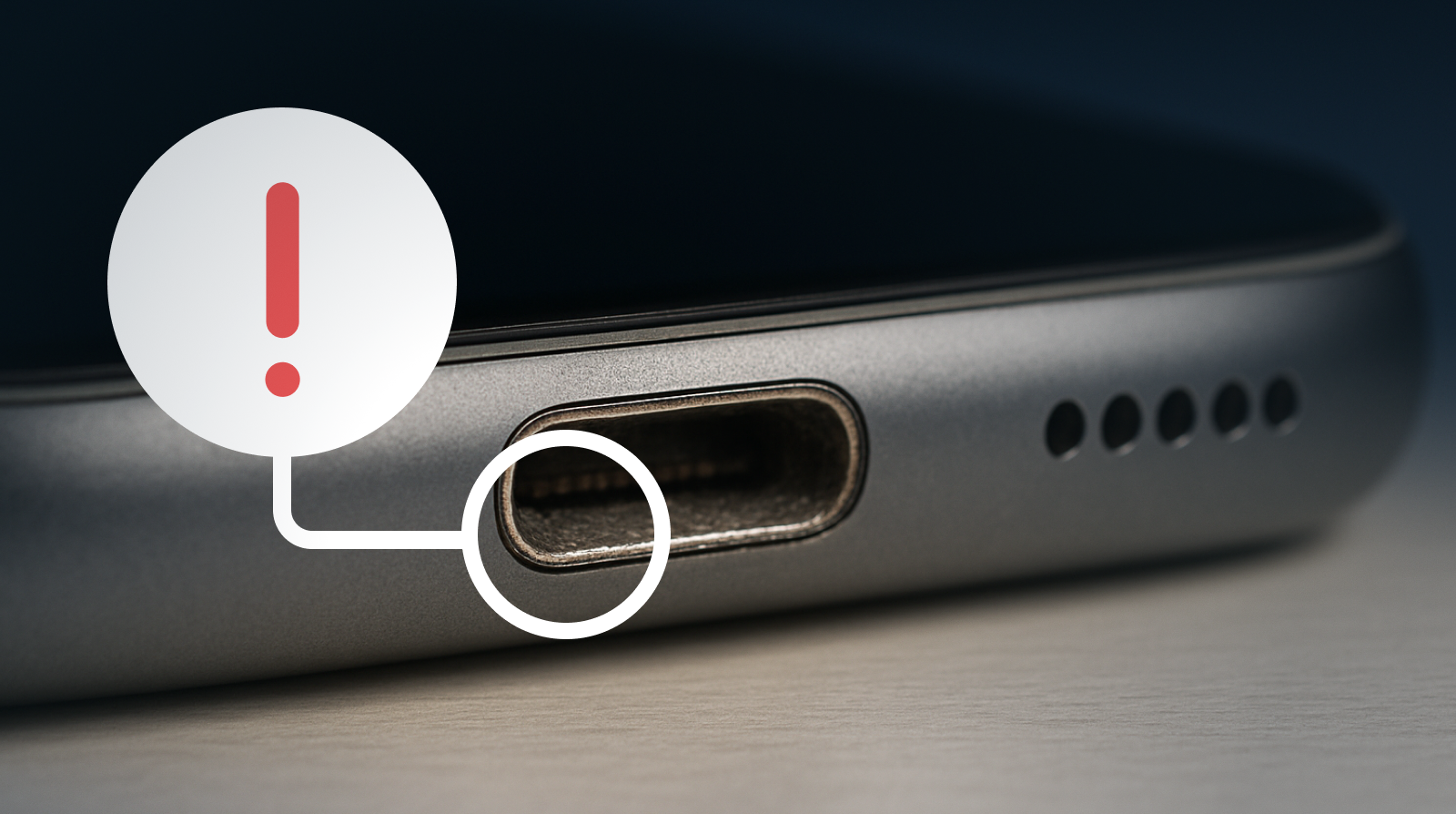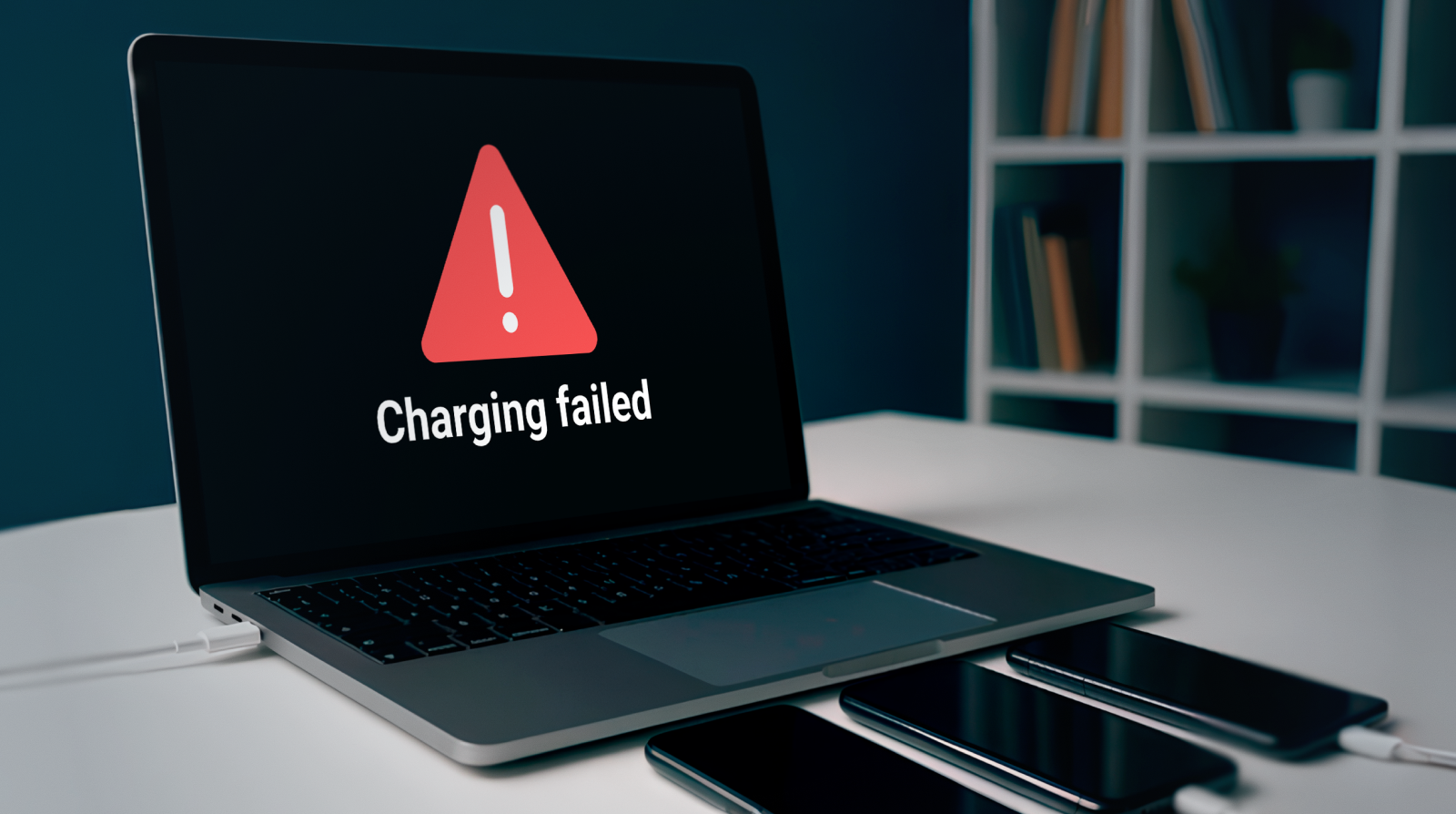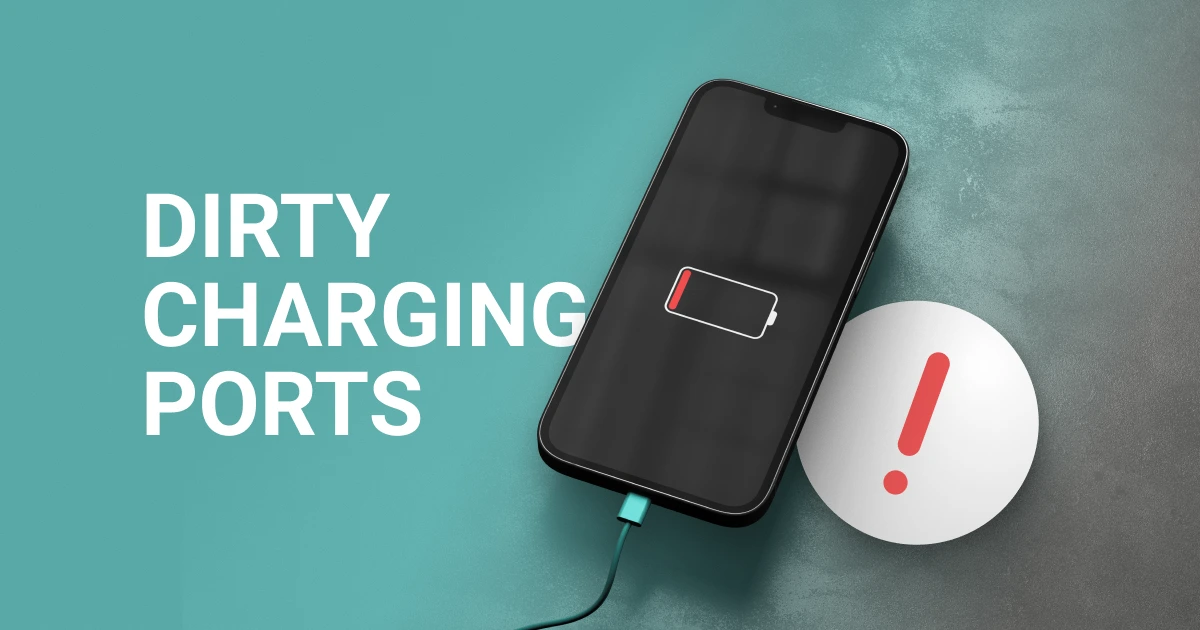Introduction: When Charging Fails Unexpectedly
You plug in your phone, expecting the familiar charging icon to appear. Instead, nothing happens. The first instinct is to blame the charger or suspect a weak battery. But in many cases, the real problem is far simpler — and more common — than people think: a dirty charging port.
At NSYS, we work every day with companies in the secondary device market and see firsthand how such a small detail can create outsized challenges. That’s why we want to shed light on the hidden role of charging ports — an issue often overlooked, but critical for accurate diagnostics and customer trust.
Why Charging Ports Get Dirty
Charging ports are one of the most exposed components of any smartphone. Unlike internal circuits, they are open to the environment and easily collect debris. Over time, even microscopic particles can disrupt contact between the cable and the phone’s pins.
The main causes include:
-
Everyday use: dust, lint, and skin particles accumulate when phones are carried in pockets or bags.
-
Moisture and oxidation: small amounts of humidity can corrode connections, especially in older devices.
-
Mechanical stress: plugging and unplugging the charger hundreds of times makes the connector more sensitive to tiny obstructions.
-
Port type: Lightning connectors in iPhones are narrower and more prone to lint buildup compared to USB-C ports.
The result: a charging cable may no longer sit firmly, or the phone charges intermittently — leading many to believe the device itself is faulty.

How to Clean a Charging Port Safely
Searching online for “how to clean iPhone charging port” or “how to clean charging port on Android” produces a mix of good and risky advice. Using pins, needles, or metal objects is strongly discouraged, as they can permanently damage delicate pins.
Safer methods include:
-
Compressed air: short bursts remove dust without physical contact.
-
Plastic or wooden tools: toothpicks or specialized picks gently lift lint from the port.
-
Soft antistatic brushes: loosen and sweep away trapped particles.
-
Professional service: repair centers use ultrasonic cleaners and specialized equipment.
Avoid using liquids, sharp objects, or excessive force — a single damaged pin may cause real charging issues that no cleaning can fix.
The Broader Impact: From One Device to Thousands

For a single phone, cleaning the port can be a quick win. But when scaled to the used device market, the consequences of dirty ports become more serious. Devices with clogged ports often produce false failures during testing, appearing faulty even though they work perfectly. This leads to reduced resale value, as phones marked with charging defects are downgraded in price, even when the problem is minor. It also creates frustration among customers, who expect refurbished devices to perform like new, including flawless charging. On top of that, businesses face operational inefficiency, spending extra time on unnecessary troubleshooting and retesting when processing large volumes of devices.
Based on feedback from our clients and industry observations, up to 4–6% of charging test failures in used devices are linked to dirty ports rather than actual hardware faults. What looks like a serious defect often turns out to be a fixable issue involving just a few particles of dust.
Why This Matters to Everyone
For everyday users, the takeaway is simple: before rushing to replace a battery, repair a charging port, or buy a new device, check whether dust is the real culprit. Often, the solution is quick, safe, and inexpensive.
From our work with companies in the secondary device market, we know that recognizing the hidden role of charging ports can significantly improve diagnostic accuracy, reduce unnecessary write-offs, and maintain customer trust. Clients who integrate port inspection into their standard testing processes consistently report fewer false failures, faster turnaround, and higher resale values.
Conclusion
Dirty charging ports are a small detail with a big impact. They frustrate individual users and, at scale, complicate diagnostics in the secondary market.
Next time a phone refuses to charge, don’t assume the worst. Sometimes the difference between a “broken” device and a fully functional one is nothing more than a speck of lint.








